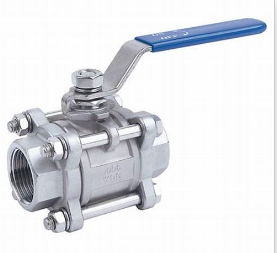miniature needle valve
Understanding Miniature Needle Valves A Compact Solution for Fluid Control
Miniature needle valves are essential components in various industrial and scientific applications where precise control of fluid flow is required. These compact devices are designed to regulate flow rates in a wide range of settings, from laboratory experiments to small-scale manufacturing processes. Their size and design make them an ideal choice for applications where space is limited and exact flow control is paramount.
At the heart of a miniature needle valve is a slender, tapered stem that fits into a cone-shaped seat. By turning the valve’s knob or handle, users can adjust the position of the needle, effectively controlling the size of the opening through which the fluid passes. This design allows for fine-tuning of flow rates, enabling operators to achieve the desired fluid dynamics with great accuracy.
One of the key advantages of miniature needle valves is their versatility
. They can handle various types of fluids, including gases and liquids, and are compatible with different materials, such as stainless steel, brass, and plastic. This adaptability makes them suitable for tasks in diverse fields, including chemical processing, aerospace, and biomedical applications.miniature needle valve

Miniature needle valves are particularly valued for their durability and reliability. Many models feature robust construction that can withstand high pressures and corrosive environments, ensuring long-lasting performance. Their compact size also reduces the overall footprint of a system, which is especially beneficial in setups where every bit of space counts, such as in microfluidics or portable instruments.
In addition to their functionality, miniature needle valves often incorporate user-friendly features such as easy-to-read scale markings for flow rate adjustments and multi-turn designs for enhanced control. These features help operators achieve precision while minimizing the risk of over-tightening or damage to the valve.
In summary, miniature needle valves play a critical role in managing fluid flow in constrained environments. Their precision, versatility, and reliability make them indispensable tools in various applications. Whether in research laboratories or intricate manufacturing processes, these small yet powerful valves continue to be a preferred choice for engineers and scientists alike, facilitating innovation and efficiency in fluid control.
-
The Key to Fluid Control: Exploring the Advantages of Ball Valves in Industrial SystemsNewsJul.09,2025
-
The Versatile World of 1, 2, and 3 Piece Ball ValvesNewsJul.09,2025
-
Stainless Steel Ball Valves: The Ideal Choice for Efficient Flow ControlNewsJul.09,2025
-
Optimizing Fluid Control with Ball Float ValvesNewsJul.09,2025
-
Manual Gate Valves: Essential for Control and EfficiencyNewsJul.09,2025
-
Everything You Need to Know About Butterfly ValvesNewsJul.09,2025
-
The Versatility of Wafer Type Butterfly ValvesNewsJul.08,2025




